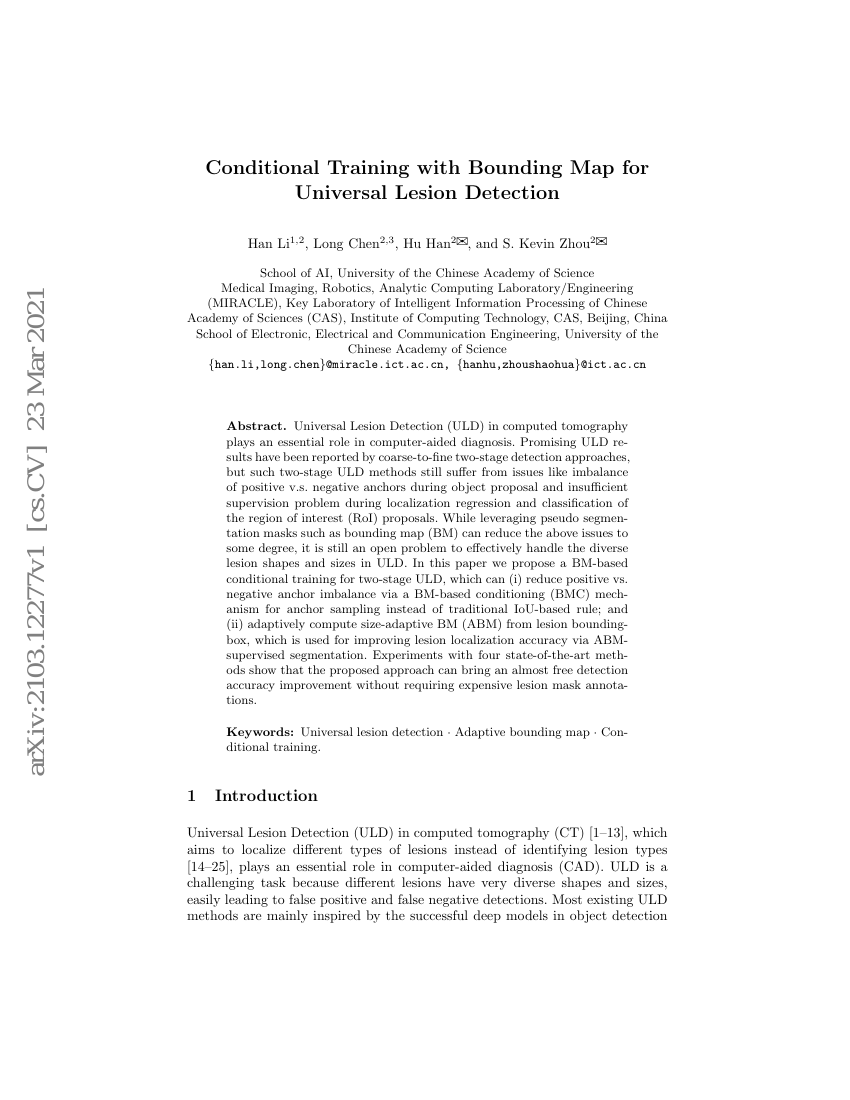Command Palette
Search for a command to run...
Li Han ; Chen Long ; Han Hu ; Zhou S. Kevin

Abstract
Universal Lesion Detection (ULD) in computed tomography plays an essentialrole in computer-aided diagnosis. Promising ULD results have been reported bycoarse-to-fine two-stage detection approaches, but such two-stage ULD methodsstill suffer from issues like imbalance of positive v.s. negative anchorsduring object proposal and insufficient supervision problem during localizationregression and classification of the region of interest (RoI) proposals. Whileleveraging pseudo segmentation masks such as bounding map (BM) can reduce theabove issues to some degree, it is still an open problem to effectively handlethe diverse lesion shapes and sizes in ULD. In this paper, we propose aBM-based conditional training for two-stage ULD, which can (i) reduce positivevs. negative anchor imbalance via BM-based conditioning (BMC) mechanism foranchor sampling instead of traditional IoU-based rule; and (ii) adaptivelycompute size-adaptive BM (ABM) from lesion bounding box, which is used forimproving lesion localization accuracy via ABMsupervised segmentation.Experiments with four state-of-the-art methods show that the proposed approachcan bring an almost free detection accuracy improvement without requiringexpensive lesion mask annotations.
Benchmarks
| Benchmark | Methodology | Metrics |
|---|---|---|
| medical-object-detection-on-deeplesion | AlignShift | Sensitivity: 86.83 |
Build AI with AI
From idea to launch — accelerate your AI development with free AI co-coding, out-of-the-box environment and best price of GPUs.